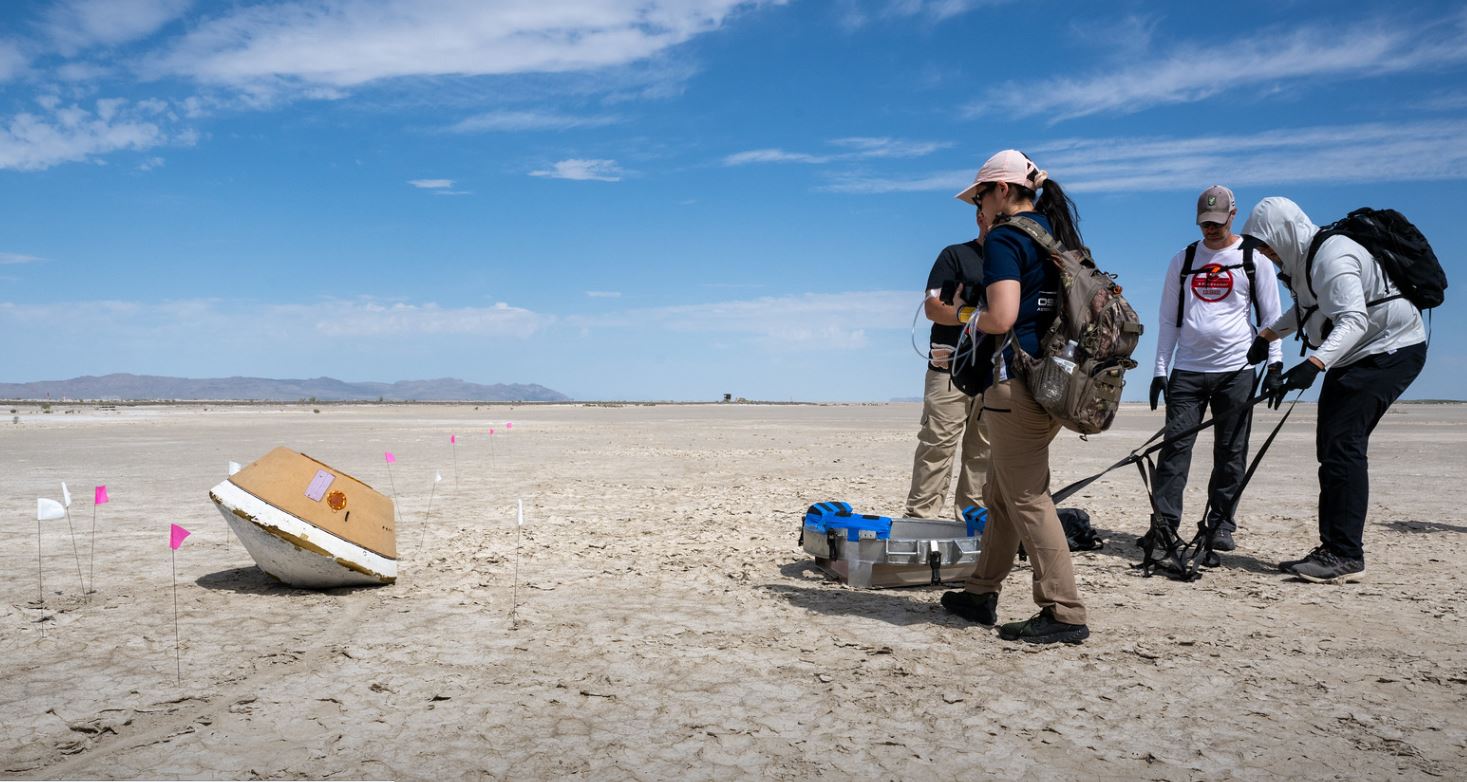In exactly two months on September 24, the OSIRIS-Rex mission will pass very close to the Earth and drop its capsule containing the samples of the asteroid Bennu. NASA teams are actively preparing for retrieve the capsule and quickly bring it back to the laboratories!
The container will land in the desert in Utah.
From Bennu to Earth
On May 10, 2021, the OSIRIS-REx probe left the vicinity of the asteroid Bennu, which it had accompanied since December 2018. But it did not leave empty-handed: in the capsule placed on its side are several hundred grams of samples, captured on the surface of the asteroid.
Two years have passed, and OSIRIS-REx is approaching Earth. It will graze our planet on September 24, with a very specific objective, to drop its samples so that the ground teams can recover them. For this, with the most precise trajectory possible, the capsule is equipped with a heat shield specially designed to withstand its crossing and braking in our atmosphere, before opening a parachute, braking again, then hitting the ground in the desert of Utah, in the United States. The area is located about 130 km south of Salt Lake City, and corresponds to a military base: the Utah Test and Training Range.
From space to the lab
Of course, NASA is not waiting for September 24 to prepare for the arrival of the samples. Everything has been in preparation for years, and moreover some of the teams were able to witness the return of the capsule (similar) from the Japanese mission Hayabusa2 in December 2020. In mid-July, the American space agency still carried out a general rehearsal, directly on the site in Utah. And it’s a little more complex than just arriving and loading the sample capsule! The first step is to spot it on the radar during its descent under parachute, before sending a team to the landing point to land in a helicopter.
A specialized deminer observes the capsule to check that there are no explosive bolts (used to eject the capsule) still active, before allowing the rest of the team to approach. Then, while some wrap the capsule in a net, the scientists immediately collect soil samples: they will serve as controls in case the watertight compartment in the center suffers from contamination. The helicopter then brings the capsule back to a particular transfer site, before it is taken to the laboratory.
The process to study the pieces of asteroids collected and repatriated will then take several months before opening in an isolated case. Depending on the exact amount of samples collected (NASA hopes up to 900 grams, but a few micrograms can already be enough to learn a lot), part of the pieces will be transferred to sealed tubes to be opened only in a few decades when study technologies have advanced significantly. We will have to watch for publications in the spring and summer of 2024 for the first results!
She puts down her capsule and she leaves
The OSIRIS-REx probe, for its part, will continue its journey. As she is in remarkable condition and the operations around Bennu have not consumed all of her fuel, it is planned to send her in pursuit of the famous asteroid Apophis, which she will reach just after her very close passage of Earth (approximately 35,000 km) in 2029.
Source : NASA

0